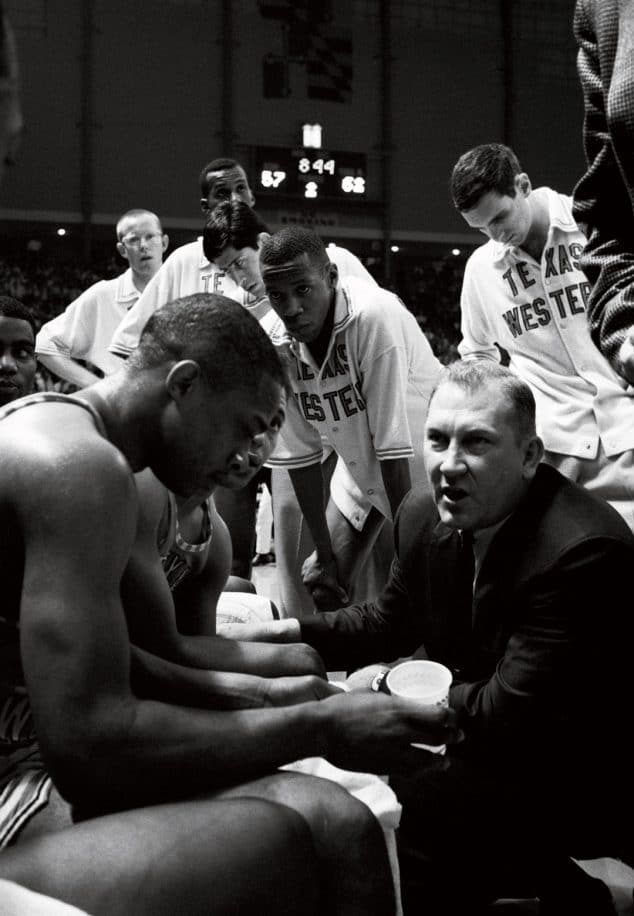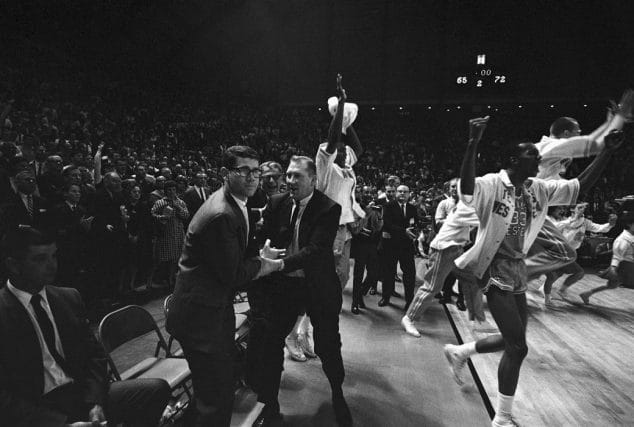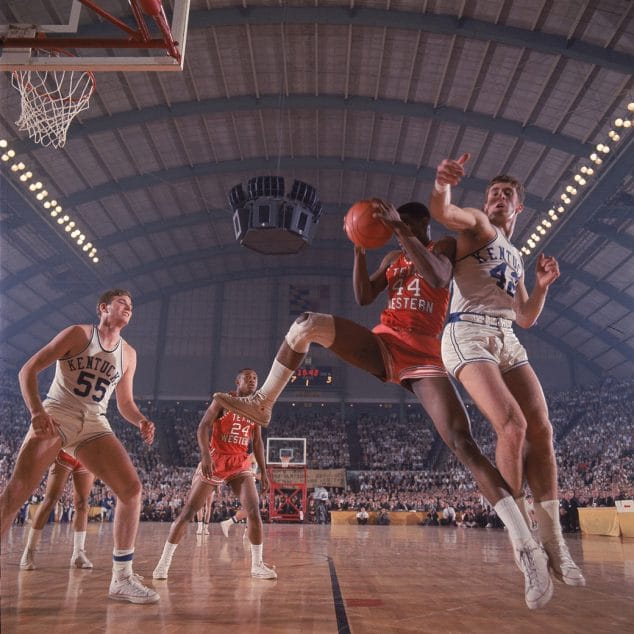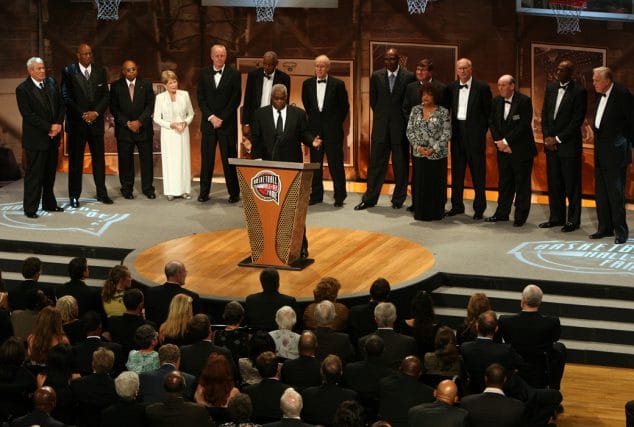Of all the celebrated quotes that inspired activists spoke during the height of the civil rights era, the adage that best describes the story of Texas Western’s 1966 NCAA title is one from Martin Luther King Jr: “Take the first step in faith. You don’t have to see the whole staircase, just take the first step.”
This statement expresses that one doesn’t have to move mountains to start a revolution, they just need to do their part.
The Miners’ head coach, Don “The Bear” Haskins, didn’t set out to change the course of history when he started five African-American players in the ’66 NCAA championship against Kentucky, he was just trying to win the biggest game of his life.

And if that meant putting five black players (Bobby Joe Hill, Orsten Artis, David Lattin, Harry Flournoy and Willie Worsley) on the court against an all-white Wildcats’ team, so be it.
For Haskins, breaking from the idea that a team had to have at least one white player on the court in order to be successful wasn’t an act of political defiance, it was a move set in motion for basketball reasons.
“I wasn’t out to be a pioneer when we played Kentucky,” Haskins told the Los Angeles Times later in his career. “I was simply playing the best players on the team, and they happened to be black.”
Beating the Adolph Rupp-led Wildcats was hard enough. They were heavily favored and boasted not only an extremely successful coach, but two AP All-America selections in Louie Dampier and Pat Riley.
But Texas Western didn’t just take down a powerhouse program in Kentucky (72-65) that night, they defeated a racially-charged mindset, too.

It didn’t come without roadblocks, though.
Haskins got more than 40,000 pieces of hate mail for going with all black players (five to start, two off the bench) in the title game and it came from everyone, including minorities.
“I got mail from blacks, saying that I was exploiting black kids,” Haskins told the LA Times. “And those letters from the whites in the South, you can just imagine what they said. It was discouraging, but you had to consider the source.”
And while the Miners were coming off an incredible season, writers and commentators were offering comments about their players that were steeped in racially coded language.
For example, one writer for the Baltimore Sun penned: “The Miners, who don’t worry much about defense but try to pour the ball through the hoop as much as possible, will present quite a challenge to Kentucky. The running, gunning Texas quintet can do more things with a basketball than a monkey on a 50-foot jungle wire.”
That racist analogy was also blatantly false, as Texas Western was methodical in their approach to the game. They focused mainly on defense, holding opponents to 62 points per contest, and ran a slow and rigid offense.
Adding to the fire was former Los Angeles Lakers star Rod Hundley, who lobbed this racial myth at Texas Western: “They can do everything with the basketball but sign it.”
“There was a certain style of play whites expected from blacks,” said ex-Vanderbilt small forward Perry Wallace, the first black basketball player in the Southeastern Conference. “’N—-r ball’ they used to call it. Whites then thought that if you put five blacks on the court at the same time, they would somehow revert to their native impulses.”
What the Miners accomplished that night in the University of Maryland’s Cole Field House was groundbreaking, but it took some time for everyone to realize its significance.
None of the players fully understood how much an all-black team winning the championship over an all-white team would mean to the overall integration of college basketball and sports as a whole.

“That part [black-white] never crossed our minds,” said Texas Western guard Orsten Artis.
“Just business,” added Artis’s backcourt mate, Bobby Joe Hill. “We weren’t on a crusade.”
It’s true, Texas Western, ranked No. 3 in 1966, wasn’t on a crusade when they bookended their 27-1 season with an NCAA title, but they did exude the courage to challenge the status quo.
“I wasn’t aware of [the impact] when it happened,” Haskins said. “Had they beaten us, it probably would have taken longer for blacks to get recruited. David Lattin, one of our guys, wanted to go to Houston, but they wouldn’t take him. The year after we won it, Elvin Hayes was at Houston.”
Haskins wasn’t the first to recruit or play black players, but that championship run shattered racial myths and made him and his team pioneers. The entire Texas Western squad was enshrined into the Naismith Memorial Basketball Hall of Fame in 2007.

“To me, he’s the guy who opened the door for not only black players, but for black coaches, as well,” said former Arkansas head coach Nolan Richardson, who played for Haskins. “What he did took a lot of guts. It took a big guy with a big heart. I’ve never said this publicly before, but I’ve never silently appreciated a man more for what he did than for what The Bear did. He taught me a hell of a lot, about basketball and about life.”
—
Maurice Bobb is a contributor to SLAM. Follow him on Twitter @ReeseReport.
Photos via Getty.